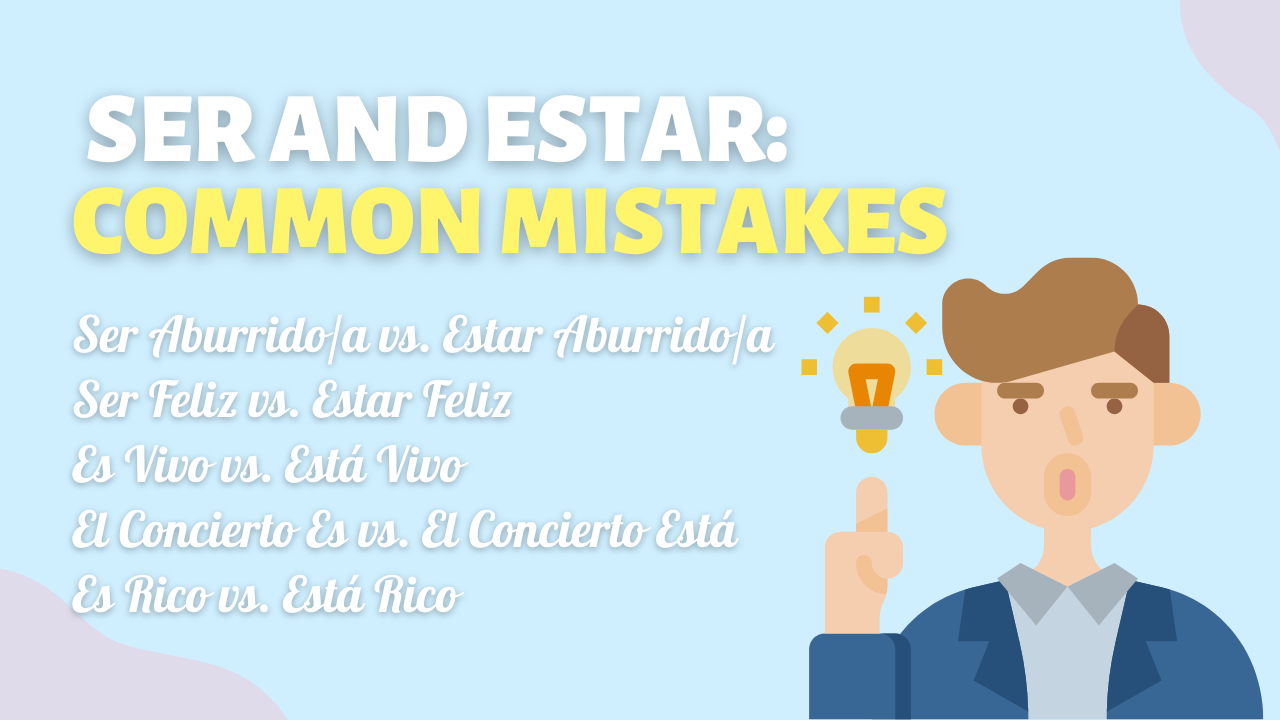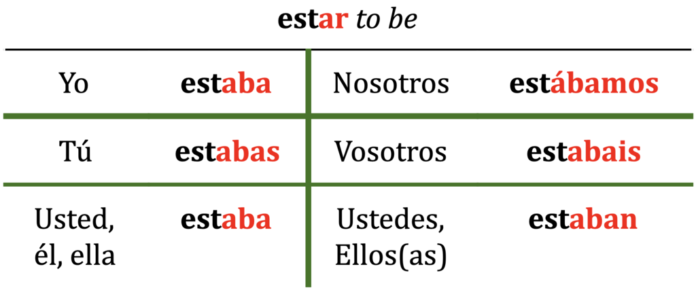Understanding Spanish conjugation is essential for any learner aiming to speak fluently. Among the various tenses in Spanish, the imperfect tense plays a vital role in expressing past actions and states. In this article, we’ll explore the estar imperfect conjugation, a critical aspect of Spanish grammar. Whether you’re describing past emotions, actions, or states, mastering this conjugation is crucial to communicating effectively in Spanish. By the end of this guide, you’ll have a solid understanding of how to use estar in the imperfect tense, helping you speak more naturally and accurately in past conversations.
The imperfect tense is used to describe past actions that were ongoing, habitual, or not yet completed. In contrast to the preterite tense, which focuses on actions that have a definite beginning or end, the imperfect tense expresses continuous actions or states. For example, when narrating a story, describing the background, or stating what someone was doing at a particular time in the past, the imperfect tense is used. The estar imperfect conjugation fits into this framework, allowing you to convey actions and states that were in progress during a certain time in the past. This guide will break down how to use estar in this crucial tense.
Conjugation of Estar in the Imperfect Tense
The estar imperfect conjugation follows a regular pattern in the imperfect tense, and once you master it, you’ll be able to apply it to various subjects and situations. Here’s how “estar” is conjugated in the imperfect tense:
- Yo estaba (I was)
- Tú estabas (You were)
- Él/ella/Ud. estaba (He/she/you were)
- Nosotros estábamos (We were)
- Vosotros estabais (You were)
- Ellos/ellas/Uds. estaban (They were)
Each of these conjugations uses a specific form that is consistent across all regular imperfect verbs. However, it’s important to remember that “estar” is an irregular verb in Spanish, and its conjugation may differ slightly from other regular verbs in the same tense. For example, while verbs like “hablar” follow the typical imperfect conjugation pattern (e.g., “hablaba” for “I was talking”), “estar” has its unique set of forms that you must memorize.
Mastering the estar imperfect conjugation is essential for accurately expressing past actions or states. For example, if you want to describe something that was happening continuously in the past, you would say, “Estaba estudiando” (I was studying). The imperfect tense conveys the idea that the action was ongoing at a particular moment in the past. Similarly, if you want to talk about a habitual action, such as your past routine, the estar imperfect conjugation helps you communicate that.
Differences Between Estar and Ser in the Imperfect Tense
While both “estar” and “ser” are translated as “to be” in English, they serve different purposes in the Spanish language. Estar is used to describe temporary conditions, locations, or emotions, while ser is used for more permanent attributes, identities, or characteristics. These distinctions hold true when conjugating these verbs in the imperfect tense.
For example, you might say “Estaba cansado” (I was tired) to describe a temporary state of being, but you would say “Era alto” (I was tall) to describe a permanent physical characteristic. This difference is critical in ensuring you use the appropriate verb in the right context. Understanding these nuances between estar and ser is vital for accurately expressing past states and characteristics in Spanish. The estar imperfect conjugation will help you focus on actions and conditions that were in progress, while ser in the imperfect tense is used to express something that was a constant or habitual feature in the past.
Common Mistakes in Estar Imperfect Conjugation

A common mistake among Spanish learners is confusing the estar imperfect conjugation with the preterite tense. While both tenses refer to past actions, the key difference lies in their use. The preterite tense is used for completed actions, while the imperfect tense is used for actions that were ongoing, habitual, or not yet completed. For example, saying “Estuve en la tienda” (I was at the store) implies the action is completed, but “Estaba en la tienda” (I was at the store) conveys that the action was ongoing in the past.
Another frequent error occurs when learners forget to match the correct form of estar with the subject. For example, “Yo estaba” means “I was,” but for “he/she” or a formal “you,” the correct conjugation is “estaba” (he/she/you was). This mistake can easily confuse listeners, so it’s important to practice using the right conjugation based on the subject. Regular practice and exposure to Spanish texts, conversations, and media will help you avoid these common errors and get comfortable with using estar imperfect conjugation in various contexts.
Real-Life Application of Estar in the Imperfect Tense
Using the estar imperfect conjugation in everyday conversations is a great way to practice. Whether you’re telling a story, describing a childhood memory, or explaining how you were feeling at a particular time in the past, estar helps set the scene. For example, you might say, “Cuando era niño, estaba siempre jugando con mis amigos” (When I was a child, I was always playing with my friends). This sentence conveys the idea that playing with friends was a habitual action in your past, which is a perfect use of the imperfect tense.
The estar imperfect conjugation also comes in handy when describing emotions or states that were ongoing in the past. For example, if you’re discussing how you felt at a specific time, you could say, “Estaba muy feliz durante las vacaciones” (I was very happy during the holidays). This type of sentence showcases how the imperfect tense helps express emotions that were ongoing or habitual, making it an indispensable tool for expressing past states and feelings in Spanish.
Comparing Estar with Other Common Spanish Verbs in the Imperfect Tense
The estar imperfect conjugation is just one part of mastering Spanish conjugation. Other important verbs like ser, tener, hacer, and ir also conjugate in the imperfect tense. Each verb has its own unique conjugation, but understanding how to use them in context is essential. For example, “tener” (to have) becomes “tenía” in the imperfect, while “hacer” (to do) becomes “hacía.” These verbs are essential for describing past actions and states, just like estar.
It’s important to practice these verbs together in sentences to build a more natural flow in your Spanish. For instance, “Yo tenía un perro” (I had a dog) is a good example of using tener in the imperfect tense, while “Yo hacía ejercicio todos los días” (I used to exercise every day) showcases the use of hacer. By practicing all these verbs, including estar, in the imperfect tense, you’ll be able to tell stories, describe past routines, and share your experiences more effectively.
Conclusion
Mastering the estar imperfect conjugation is a vital step in becoming fluent in Spanish. This conjugation allows you to describe ongoing actions, states, and habitual events in the past. Whether you’re narrating a story, explaining your childhood, or discussing past emotions, the estar imperfect conjugation is an essential tool in your Spanish toolkit. Practice, exposure, and regular use of this conjugation will help you communicate more naturally and accurately in Spanish.
FAQs
- What is the difference between the preterite and imperfect tenses in Spanish? The preterite tense refers to completed actions, while the imperfect tense describes actions that were ongoing or habitual in the past.
- How do I use “estar” in the present tense? In the present tense, “estar” is conjugated as “estoy,” “estás,” “está,” “estamos,” “estáis,” and “están.”
- Can “estar” be used in other tenses besides the imperfect? Yes, “estar” can be conjugated in various tenses, including the present, future, and subjunctive tenses.
- How do I know when to use “estar” versus “ser”? Use “estar” for temporary states or conditions and “ser” for permanent traits or identities.
- Is it difficult to conjugate “estar” in the imperfect tense? While “estar” is irregular, with practice and exposure to common sentences, the conjugation in the imperfect tense becomes easier over time.
- What are some common mistakes when using the “estar imperfect conjugation”? One common mistake is confusing the imperfect tense with the preterite tense, and another is misusing subject pronouns with the conjugation. Practice helps avoid these errors.
You may also read: What is CrackWatch?



